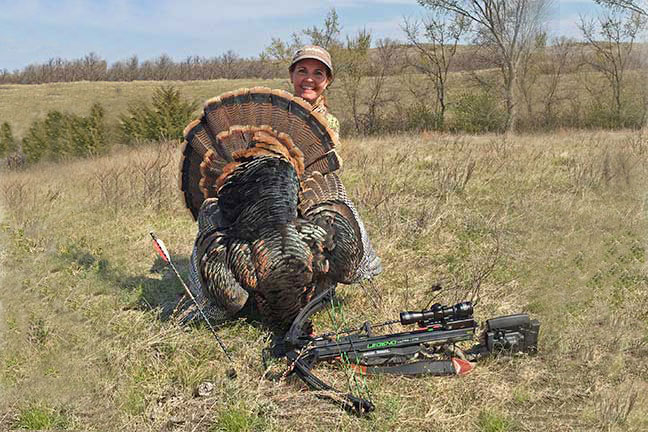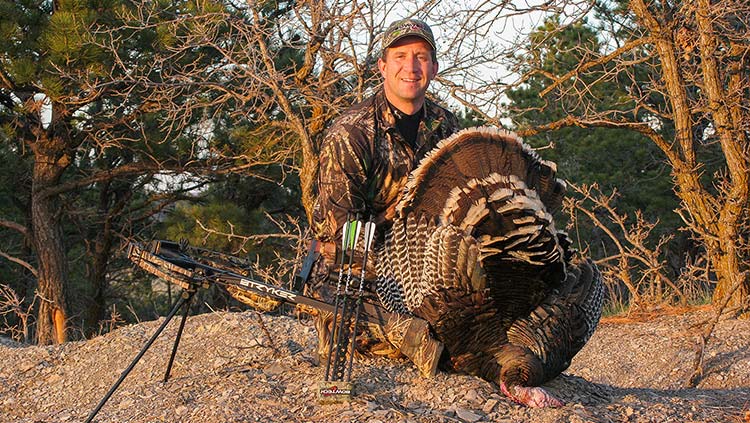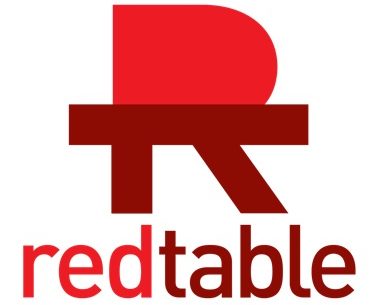With my cheek firmly placed on the stock, I waited patiently for the tom to turn. When the longbeard pirouetted and faced the decoy, I held the crosshairs steady and gently squeezed the trigger.
The bolt was quickly on its way, hitting the vitals of the strutting tom. Soon, I was strapping a tag to the leg of the striking, Merriam’s turkey. It was my first time turkey hunting with a crossbow, and I was hooked.
I live in Oregon, where turkey hunting with a crossbow is prohibited. (Hopefully, that will change one day.) So, I traveled to Wyoming to experience the thrills of chasing spring thunder chickens with my crossbow. I’d taken dozens of turkeys with my compound bow and more than that with a shotgun in my more than 35 years of turkey hunting. I was ready for something new.
Turkey hunting with a crossbow is a fun challenge. It’s a great transition for those looking for a change from pursuing them with a shotgun, but it’s more forgiving than hunting them with a vertical bow. Here are five tips that I quickly learned that will help you tag a turkey with a crossbow.
You don’t have to be a world-class caller to coax a turkey to within crossbow range, but you do want to call effectively and with confidence. If you can master yelps, clucks and purrs, you’re set. Calling a tom within crossbow range is ideal, versus trying to pull off a spot-and-stalk hunt where movement is unavoidable. Turkeys see in color and have vision equivalent to 8x binoculars, so they don’t miss much.
Practice the basic & best turkey calls and be able to make them with a box and/or slate call. Being able to make yelps and purrs with a diaphragm call will greatly help as it frees both hands and greatly minimizes movement.
Box calls and slates produce volume, which is great for capturing the attention of birds in the distance and drawing them in close. But as turkeys get near, hunters must be stone still. This means no hand movement for call operation.
If you can see a turkey, it can see you, and any movement will get you busted. Having a diaphragm call in your mouth will allow hands-free operation, allowing you to pull turkeys within shooting range or stop them for the perfect shot angle if they are moving around.
Decoys will also help attract toms and keep their attention diverted so you can take a shot at a calm bird. Placing a hen decoy 10 to 15 yards in front of you is a good distance when setting up to hunt with a crossbow. If hunting from a ground blind, placing the decoy five yards from your shooting window is not too close.
While turkeys have powerful vision, it is monocular because their eyes are set far apart on the sides of their heads. This means they have poor depth perception. That
explains why they may closely approach hunters and ground blinds as long as all is still and there are no sudden movements or sounds. So, if you are hunting from a popup ground blind, make sure all windows are closed except for the one you’ll be shooting out. Also, check to be sure there are no loose parts to potentially flap in the wind because such movement will spook turkeys.
If you desire a broadside shot on a tom, situate the hen decoy facing broadside to your shooting position because a tom will usually move in front of it to make sure he’s being seen. If you want a straight-on shot, place the decoy facing away. Upon seeing a hen decoy, toms will often strut around it, trying to get in front of it so she can see him. This is where stopping the turkey for the shot precisely where you want it is easy to do with a diaphragm call.
The beauty of turkey hunting with a crossbow comes in the form of mobility. With a vertical bow it is extremely difficult to hunt from the ground without a blind because any movement will spook a turkey. If you try reaching full draw with a vertical bow, with a tom in sight, the gig is up fast.
But with a crossbow that is bolted in place and cocked, movement is minimal, just as it is when you’re hunting them with a shotgun. Shooting off a sturdy monopod or bipod is a big help. This ensures no movement as the bird approaches. At the very least, sit so you can rest the crossbow on your knee, but be mindful not to get any fingers or clothes above the rail, where the string will hit it. Before the tom pops into view, have the crossbow steadied on the rest and aimed at the decoy. You may be in this position anywhere from a couple of minutes to more than an hour, so get comfortable with a cushioned seat.
When a tom comes into sight, don’t move, even if it is hundreds of yards away. The only movements you’ll want to make when a tom is in sight are moving the safety to the off position and pulling the trigger. Be sure to wear camouflaged gloves and a face mask and practice shooting in all your gear before the hunt. When it comes time to take a shot, you should know how all the moving parts operate and not be distracted worrying about the operation of your crossbow.
Because crossbows shoot so fast, fixed broadheads are often preferred over expandables for turkey hunting. A bolt can pass so swiftly through a tom and with so much kinetic energy that the expandable may not open. It’s better to have a big wound channel than a tiny one.
Be sure to practice shooting your broadhead so you know exactly where it hits. Since turkeys are nervous by nature, they flinch at the slightest movement and instantaneous noises. This is why you want turkeys close when shooting them with a crossbow.
Spring turkey season offers crossbow hunters an exciting opportunity to tag a tasty tom. But unlike shooting a turkey with a shotgun, proper shot placement with a crossbow requires precision aiming to ensure a clean, ethical kill.
In this comprehensive guide, we’ll cover the turkey’s anatomy and detail the most effective shot angles and locations to aim your crossbow bolt for a lethal hit on a gobbler.
Turkey Vital Zones
Understanding a turkey’s anatomy is key for crossbow hunters. Their small vital organs are located higher up than you may expect:
-
Head and Neck – Instantly fatal but very small target zone. Aim for base of neck if going for headshot.
-
Spine – Hitting the spine immobilizes the bird immediately. Aim for the lower neck area.
-
Vitals – Heart and lungs are about softball-sized. Hits here are lethal but allow the bird to move briefly before expiring.
-
Legs/Wings – Hitting these will injure but not kill. Avoid leg and wing shots
Best Crossbow Shot Opportunities
Here are the most effective shot angles and aiming points
Head-On
The beard is your aiming point if the tom is facing you head-on Settle your crosshairs right at the base of the beard to hit the vitals This is a great shot angle when using decoys.
Quartering-Away
Aim at the base of the tail feathers if the tom is angled away. This “Texas heart shot” will drive through vitals for a clean kill.
Broadside
If the tom is broadside, aim at the center of the body cavity in line with the legs. The vitals sit mid-body between the drumsticks.
Quartering Toward
Aim low on the chest when the turkey is quartering toward you. This should drive your bolt through the vitals. The beard again provides an aiming reference.
Rear Shot
If the tom is walking directly away, aim for the back of the turkey’s head where it meets the neck. The spine shot will drop him immediately.
Shot Distances and Accuracy
Crossbows are capable of 60+ yard shots. But for turkey hunting, keep shots 30 yards or less. The vitals are a small target and you need pinpoint precision.
Practice regularly at the range to ensure you can consistently hit a 3-inch target at desired hunting distances. Broadheads and field points may have different points of impact, so be sure to sight in your crossbow with the broadheads you plan to hunt with.
Choosing Crossbow Bolts and Broadheads
Use bolts matched to your crossbow’s specifications for optimum accuracy. For broadheads, go with fixed 2+ inch cutting diameter blades like the Rage Crossbow X or G5 Striker for maximum damage. Mechanicals can work too but may not open on a bird due to the light bone mass.
Responsible Shot Selection
Turkeys have excellent vision and hearing. Be patient and only take high percentage shot angles. If not perfectly broadside or facing directly away, it’s best to wait. Refrain from long shots where precision is compromised.
With knowledge of shot placement and your crossbow dialed in, you’ll be ready to drop a longbeard in his tracks when spring turkey season arrives!

Know the Kill Zone
Shotgunners can easily hammer a gobbler that exposes his head — even through the brush — at 40 yards and well beyond with today’s latest turkey loads. But, a crossbow is limited to one projectile, not an entire swarm of projectiles. And while you can certainly go for a headshot, it will be difficult to hit unless the gobbler is strutting and standing stock-still with his head broadside and your crossbow is on a rock-solid rest. Thus, your main target is the body in most cases.
A turkey’s heart/lung kill zone is about the size of a baseball. Some folks aim for the tops of the drumsticks to immobilize the bird and cause it to bleed out quickly, but this requires aiming fairly low. Someone once said, “Hit ‘em low, watch ‘em go. Hit ‘em high, watch ‘em die.” While taking out the drumsticks is incredibly effective and deadly, accidentally hitting low and in front of the drumsticks puts you in a non-vital zone, and hitting behind the drumsticks will get only feathers or maybe the butt and some intestines. With broadhead-tipped arrows and bolts, I largely prefer aiming for the heart/lung kill zone because it’s easier to identify and yields fast results.
As far as placement relative to angles, here’s the lowdown. On a facing bird, hit dead center between the base of the neck and the beard and he’s yours. On a broadside bird, I aim for the upper third just behind the wing butt. This is the location of the heart and lungs. On a strutting bird facing straight away, I aim where the tail feather quills converge. If the bird is upright (not strutting) and facing away, I aim for the middle of the back. On a quartering-toward angle, I aim between the wing butt and the base of the neck. Quartering away is a deadly angle, but it’s also an easy shot to mess up, the common mistake being a hit that’s too far forward and slices only through the breast. Make sure to aim far enough back that your arrow goes through the center of the bird.
Where To Shoot a Turkey With a Crossbow
All types of turkeys have small vitals in proportion to the outline of their feathered bodies. A favorite crossbow shot of mine is when a tom is standing erect, feathers tucked in tight to the body, head extended, facing straight away. This exposes the entire spine. The lungs are situated in the middle of the body between the wings. Place a broadhead here and you’ll get your bird every time, because not only are you hitting vitals, but you’re also severing the spine, meaning your bird will drop on the spot.
Another solid crossbow shot is when a tom is in full strut and facing away. Place a bolt where all the tail feathers converge; this will drive the broadhead through the vitals.
When a tom is in full strut and facing you, put the broadhead where the base of the neck meets the feathers. This shot can break the neck and continue passing through the bird, hitting the vitals.
If a tom is standing upright and facing you with feathers tucked in, place the bolt where the beard comes out of the body. This will ensure an upper-heart and lower-lung shot, and if centered, it will sever the spine. Make sure the bird is steady and calm for this shot.

A good shot when a bird is standing upright, broadside, feathers tucked in, is to follow the legs straight up the body, placing the broadhead in the center of the bird’s body. This will ensure a heart shot.
Another good shot is when a tom is in full strut and standing broadside. This is a deceiving angle since the bird’s feathers are puffed up, its head is retracted, and the tail is fully fanned. Here, draw an imaginary line connecting the base of the neck to the base of the tail. Next, come straight up from the legs. Where the legs bisect the horizontal line drawn between the neck and the tail, and right in the middle of the body, that’s your sweet spot. Hit this “T” intersection and you’ll find an open triangle leading to the heart. If the bolt flies a bit high, it will hit the lungs and the spine.
By knowing turkey behavior and anatomy, the odds of tagging one with a crossbow are greatly increased. Equip your setup with a stable shooting aid, know precisely where the bolts hit, keep movement to a minimum, and you’re on the way to experiencing just how thrilling crossbow hunting for turkeys can be.
Proper Shot Placement For BOWHUNTING Turkeys!
FAQ
Where should you shoot a turkey with a crossbow?
You can shoot at the head and neck or at the heart-and-lung vital area, which is about the size of a softball and requires different aiming points depending …
Is a crossbow good for turkey hunting?
It is widely accepted that portable ground blinds and crossbows are a great combination for hunting turkeys. It’s true, they are. But many hunts from elevated positions has also proven just as productive. And why not? Deer and turkeys reside and frequent many of the same habitats.
Where are you supposed to shoot a turkey?
- The head and neck are the most effective shot for both shotguns and bows
- A clean shot to the head or neck can be devastating
- A spray of shot to the head and neck can shatter the turkey’s central nervous system
- The head is a small target that moves a lot, so keep the bird’s head above the bead on your shotgun
What is the best broadhead for turkey hunting with a crossbow?
- Best Overall: Rage X-treme Turkey Broadhead.
- Best Mechanical: New Archery Products Spitfire Gobbler Getter.
- Best Fixed-Blade: DirtNap Gear Shred Head.
- Best for Head and Neck Shots: Magnus Bullhead Turkey Fixed Blade.
- Best Crossbow: Grim Reaper Pro Series Crossbow Broadhead.
